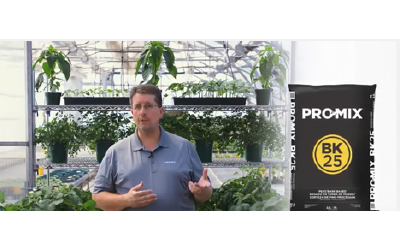Answers to Your Most-Asked Plant Questions
I may be getting better at this question-and-answer thing. Here are some short answers, Jeopardy style, to some of the plant questions I am asked most often.
Answer: Yes
Breeders, growers, and garden center owners sometimes grill me about one of my more frequently expressed opinions. We have too many new plants, considering how few see the light of day.
So when I am asked, “Do you think we need more new plants every year?,” you may be surprised to learn my answer to the question is an absolute, unqualified yes.
No matter how much I rail about one more heuchera or one more hydrangea, the importance of new cannot be overstated. Who cares how many of the new introductions you can provide? There is always a need for excitement and creativity. We can be boring, but our plants cannot.
Answer: None
That is my answer to a question I often receive about ornamental grasses: “What grasses can I plant in the shade?”
Truth is good, but far be it for me to disappoint them with such slim pickings. So, I mention that Japanese forest grass may work in some shade, but only in the North.
Answer: Panicum
When I am asked, “What is the best choice for a native ornamental grass?,” I can answer in three syllables. So many choices of switchgrasses, so easy to find.
If they want more, I tell them there are many fine choices for native grasses, such as little blue stem, prairie dropseed, tufted hairgrass, and muhly grass. If their eyes don’t glaze over, I mention the attributes of handsome summer foliage, excellent fall color, and lack of worries about reseeding. Grasses are here to stay, and that is a good thing.
Answer: It Depends
This is my pat answer for almost any question. For example, “What is the best ornamental grass (native, perennial) for me?” It depends mostly on the area of the country. People in the North can’t use muhly grass, while those in the South do poorly with Hakonechloa. People in the prairie states do better with gamma grass than those in the East.
On how much sun/shade the area receives, I tell them “Horticulture is global; gardening is local.”
Answer: Deer
When asked, “What do I feel is the number one problem gardeners/landscapers are frustrated with?,” I have a ready answer.
I can’t imagine there is a garden center operator, grower, landscaper, or designer who does not fight this issue. Nor can I imagine any of those professionals not being armed with a suitable and credible list of plants they can use for deer-frequented areas.
Do not get sucked into the adage that deer will eat anything. That is a self-fulfilling prophecy. If you believe that, nothing will ever be planted. There are many plants deer will not touch unless they are starving. To ignore deer is to do so at your own risk.
Answer: Pollinators
After deer, this is the second topic I am asked most about. I don’t know when bees became so cuddly or caterpillars became so pretty, but in the last few years, they have become rock stars.
Like the embracing of native plants, this is a grassroots movement — people really do care.
While I am a little skittish of the dozens of bees buzzing about, EpiPen at the ready, others see only the beauty of natural pollination. Where I am a little turned off by all those obnoxious caterpillars chewing on my fennel, others only see black swallowtail butterflies.
All of us in the industry must recognize those plants that attract bees, moths, butterflies, and hummingbirds, and market them. They are as much a part of a landscape plan as the plants we sell.
Answer: Natives
This is the obvious answer to that invariably asked follow-up question to the previous topic: “What plants are best at attracting pollinators?”
I have been asked this countless times, and the answer is short and easy. We all know the basic reason a plant even produces a flower is to attract pollinators. So, I could have just as easily answered, “Anything that flowers.” But natives attract native fauna, and the popularity of natives has gone hand-in-hand with the appreciation of pollinators, so let’s foster this union.
Answer: Nativars
Your neighbors, my daughters, and your friends probably would agree that plants are good for the environment. A garden is simply a way to create an ecosystem at home.
So, when I am asked, “What natives should I put in my garden?,” I say nativars. Native species are terrific, but let’s get real. Said friends and neighbors will spend their money on ornamental plants, not just plants. Cultivars of native plants (nativars) are the answer, and an easy one at that. They have vastly improved garden beauty, can be found at any nursery, and are offered for all the right reasons.
Answer: Solution Gardening
Nowhere am I immune from the question, “What plants can I use for … ?” This could be anything from fragrance to pollinators to groundcovers.
Although I have always been asked about such problems, the answers stay the same: buy plants with solutions.
The answers consumers want are not really about plants. They’re about the solutions they provide. I have mentioned this fast-moving trend in other columns, but I hope breeders, sellers, and gardeners look at plants first with an eye to a solution, rather than with an eye to another pretty red flower.









